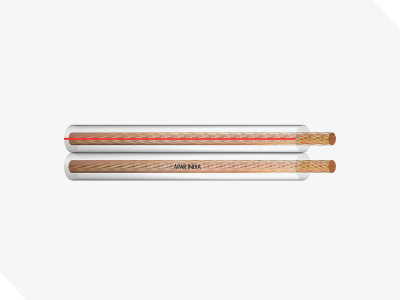![]()
CCTV CABLE
APAR CCTV cables are made using high-quality raw materials that enable them to transmit the complete and finest video frequency range, making them an excellent choice for CCTV.
Our CCTV cables consist of a RG-59 Coaxial Cu. Cable to ensure distortion or attenuation-free video signals, resulting in a clear picture over the complete low frequency bandwidth of transmission. Additionally, the cables have three “cores” made of Annealed Tinned flexible Cu. conductor to ensure proper soldering/jointing with CCTV cameras and video equipment, ensuring adequate power supply to the equipment.
Features & Advantages


Annealed Tinned Cu Conductor, JF, AL.Foiled & AL.wire braided

CCTV 4+1
Technical Characteristics & Standards
Cable Type
Cable Size
CCTV Cable
CCTV 3+1
CCTV Cable
CCTV 4+1
CCTV Cable
CCTV 6+1
CCTV Cable
CCTV 3+1 Armoured
CCTV Cable
CCTV 4+1 Armoured
CCTV Cable
CCTV 6+1 Armoured
 Get the product catalogue and specs
Download PDF
Get the product catalogue and specs
Download PDF FAQs
Wires and cables are essential components used for electrical and data transmission purposes. They facilitate the flow of electricity or signals between devices, appliances, and systems.
There are various types of wires and cables, including electrical wires, coaxial cables, twisted pair cables, fiber optic cables, ribbon cables, and more. Each type serves specific purposes based on their characteristics and applications.
Selecting the appropriate wire or cable involves considering factors such as the intended use, voltage requirements, current capacity, environmental conditions, and the distance of transmission. It's crucial to consult with experts or refer to technical specifications to make an informed decision.
Solid wires consist of a single, solid conductor, making them suitable for permanent installations. Stranded wires, on the other hand, are composed of multiple thin strands of wire, providing flexibility and making them ideal for applications requiring frequent bending or movement.
For data transmission, it is essential to use cables designed specifically for this purpose, such as twisted pair cables or fiber optic cables. These cables minimize data interference and offer higher bandwidth, ensuring reliable data transfer.














